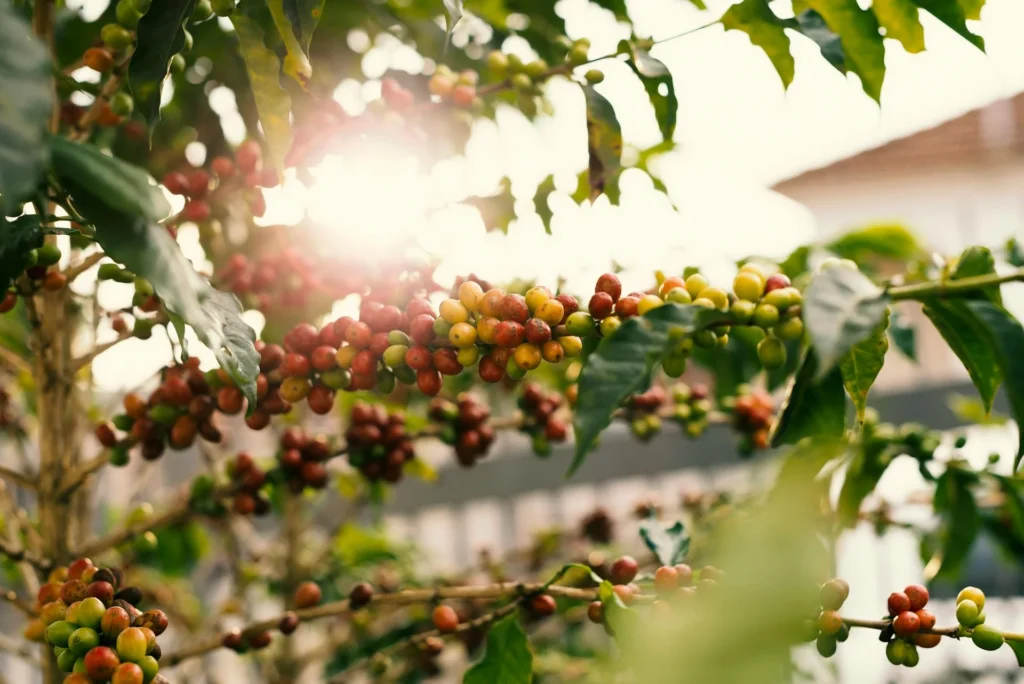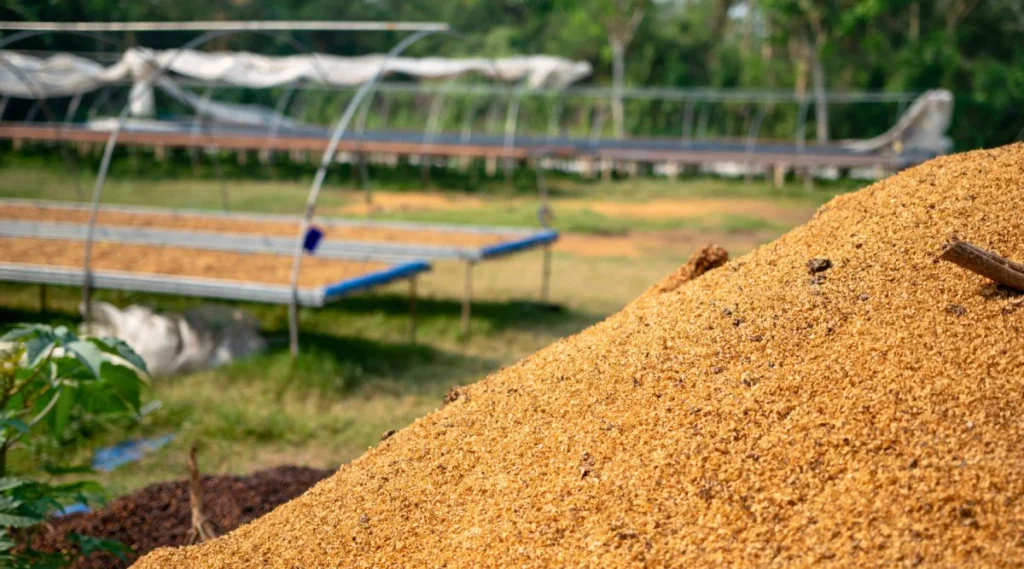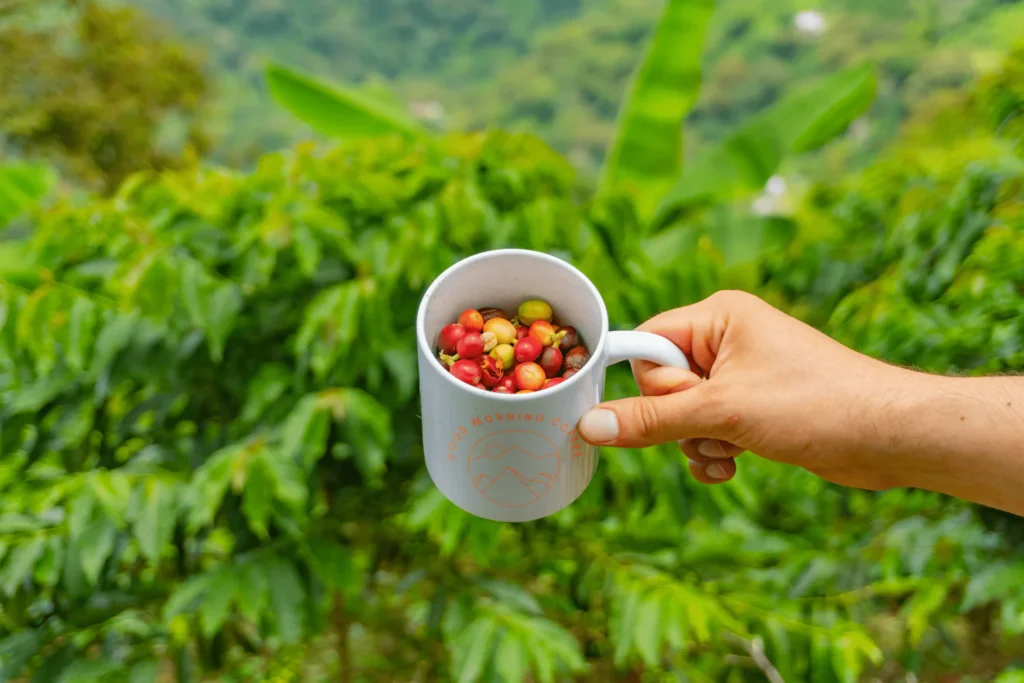If you’re planning a trip to Colombia and haven’t added a visit to the coffee region—aka the Eje Cafetero to your itinerary yet… it might be time to rethink your priorities.
This part of the country isn’t just about great views and rolling green hills (though, yeah—it’s got those in spades). It’s the heart of Colombian coffee culture. We’re talking real-deal coffee farms, known locally as fincas, where you can actually see how one of the best coffees in the world gets grown, picked, processed, and poured.
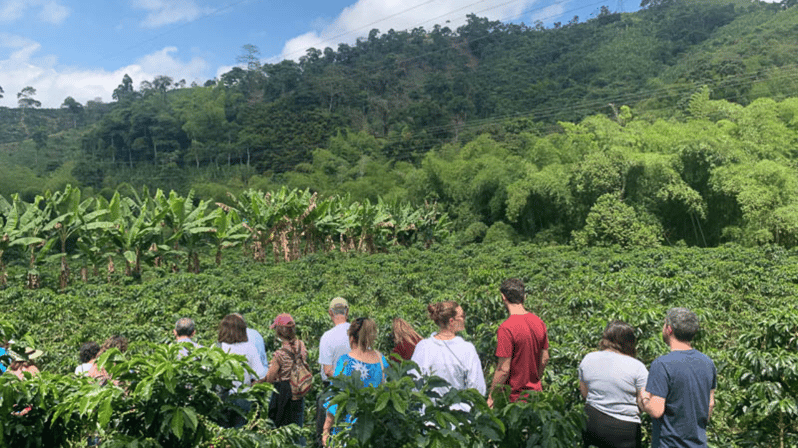
From the laid-back town of Salento to the high-altitude slopes near Manizales and Pijao, this region is packed with fincas that offer immersive coffee tours, some short and sweet, others full-on deep dives into coffee production, cupping, and everything in between.
This guide is all about helping you find the best coffee farm tours for your vibe—whether you’re here for the flavor, the farming process, or just a legit excuse to drink your weight in high-quality Colombian coffee.
What Makes El Eje Cafetero Special?
Colombia grows some of the best cup of coffee in the world, but the Eje Cafetero—also called the Coffee Triangle—is where that reputation really takes root.
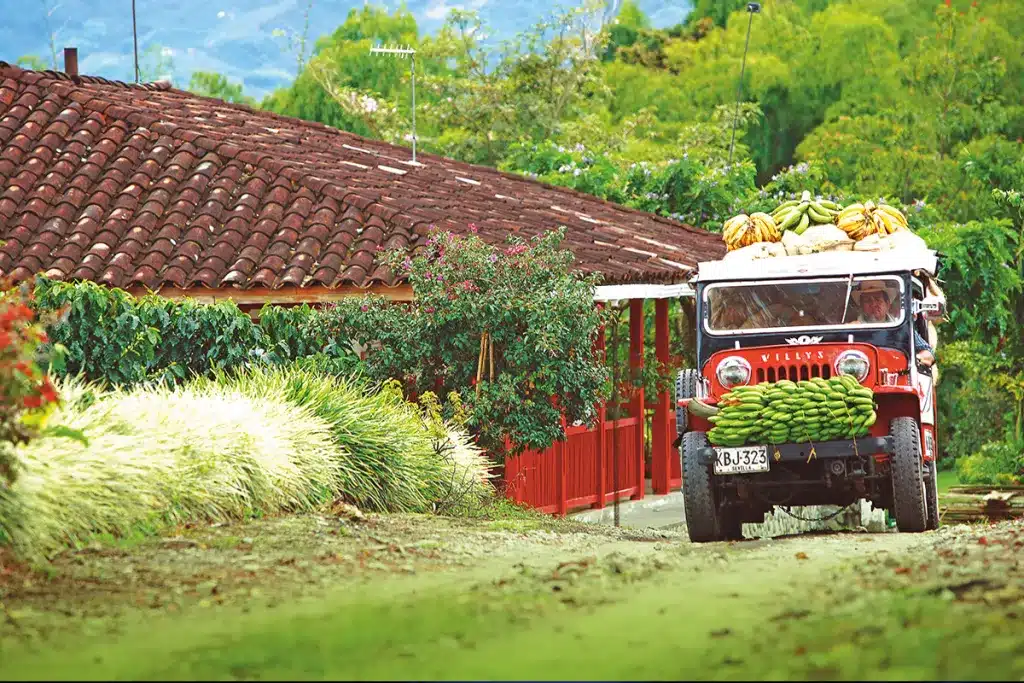
This region stretches across Quindío, Risaralda, and Caldas, tucked into the foothills of the Andes. The high altitude, rich volcanic soil, and steady climate here create perfect conditions for growing Arabica coffee, especially the varieties Colombia is famous for.
But it’s not just about the beans. The coffee region of Colombia is a UNESCO-listed Cultural Landscape, which means it’s recognized not only for its natural beauty, but also for how the culture and history of coffee farming are woven into everyday life.
What makes it different from other places where coffee is grown is that here, it’s more than a crop—it’s a way of life. You don’t just visit a coffee plantation, you meet the families who’ve been working the land for generations. You don’t just drink a cup, you learn what went into that coffee bean, from soil to drying patio to roaster.
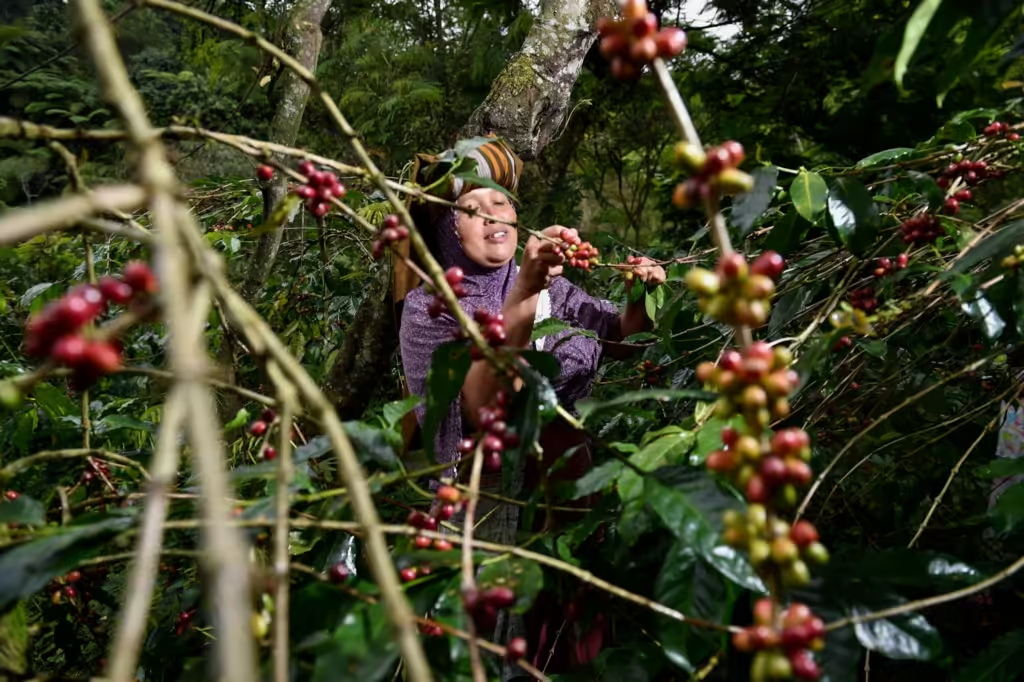
That’s why people don’t come here just for a caffeine fix—they come for a full-on best coffee experience. One that’s rooted in tradition, but also evolving with more specialty coffee practices, sustainability efforts, and even premium coffee tours led by expert baristas and growers.
How to Choose the Best Coffee Farm Tours in Colombia
Not all coffee tours in Colombia are the same and that’s a good thing. Whether you’re short on time, traveling with kids, or deep into the specialty coffee scene, there’s a finca that fits your vibe.
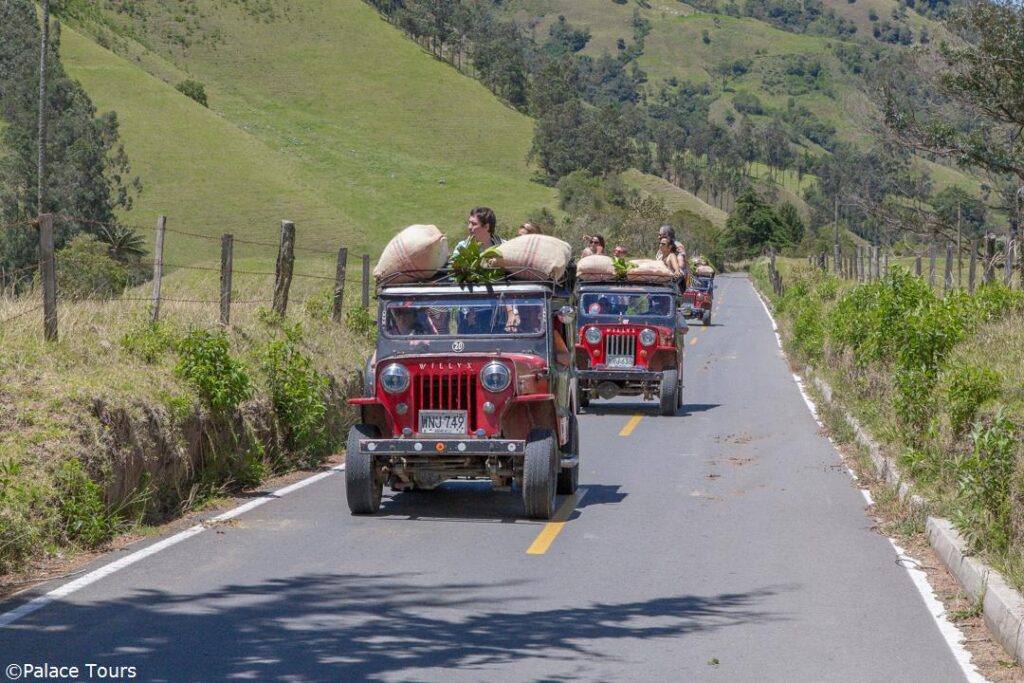
Here’s how to filter your options without overthinking it.
For the First-Time Visitor: The All-in-One Experience
If you’re visiting a coffee farm in Colombia for the first time, go for a balanced tour that walks you through the entire coffee production process from bean to brew.
Look for farms that offer hands-on activities like harvesting or roasting. These tours usually take 2–3 hours and cover everything from how coffee is grown, to how it’s processed, and of course, how it’s brewed. Great for context, even if you’re not a coffee nerd (yet).
Popular picks: Finca El Ocaso in Salento, Don Elias Coffee Tour
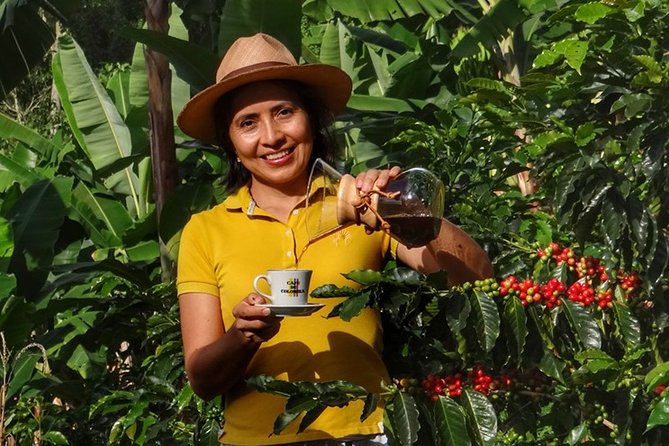
For the Coffee Nerd: Go Specialty or Go Home
If your idea of fun is talking about fermentation, grind size, and origin notes, then book a premium coffee tour that dives deep into specialty coffee practices. These tours might include coffee cupping, brewing workshops, or guided tastings of different Arabica varietals.
You’ll want farms that emphasize small-batch coffee, experimental processing, or have a reputation in the third-wave coffee scene.
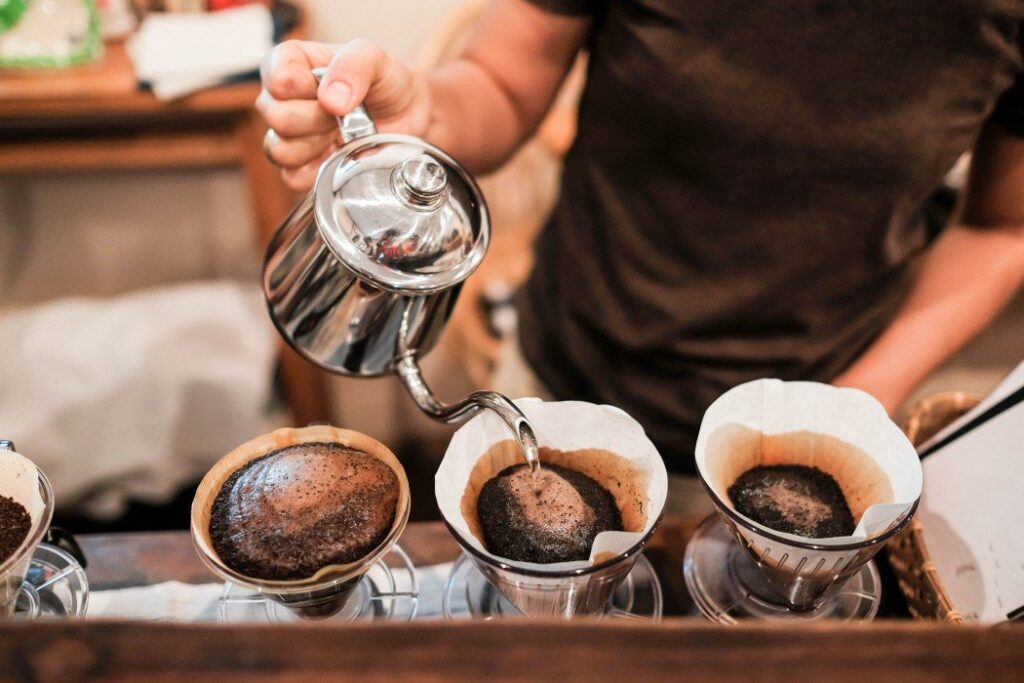
Popular picks: Café San Alberto, Momota Coffee Lab
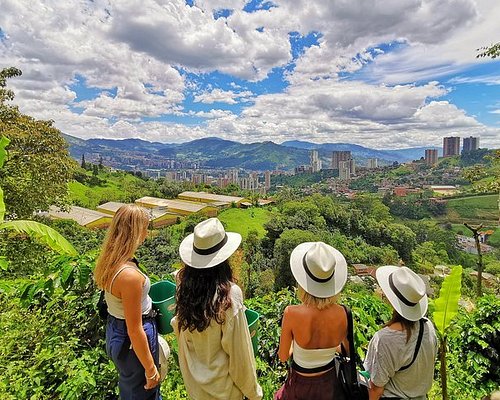
For the Whole Crew: Family-Friendly Farms
Traveling with kids or just want something more relaxed? Look for farms that offer interactive or family-oriented tours. Some of these include horseback riding, nature walks, or even cocoa tastings alongside the coffee sessions.
They’re less about geeky details and more about enjoying the environment and culture. Still informative, but with plenty of breathing room.
Popular picks: WakeCup Coffee Tour in Pijao, Divisa de Don Juan
For the Slow Traveler: Stay on a Finca
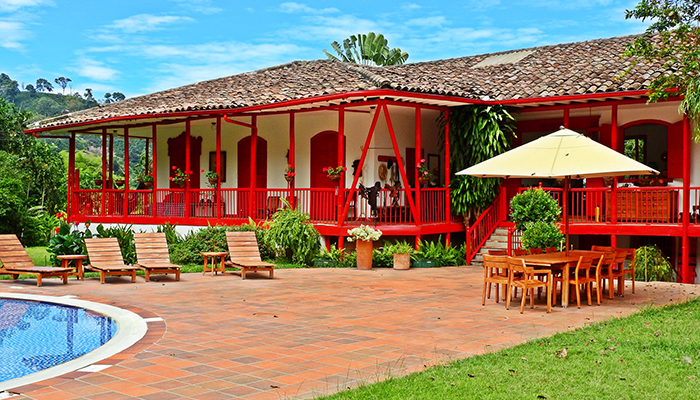
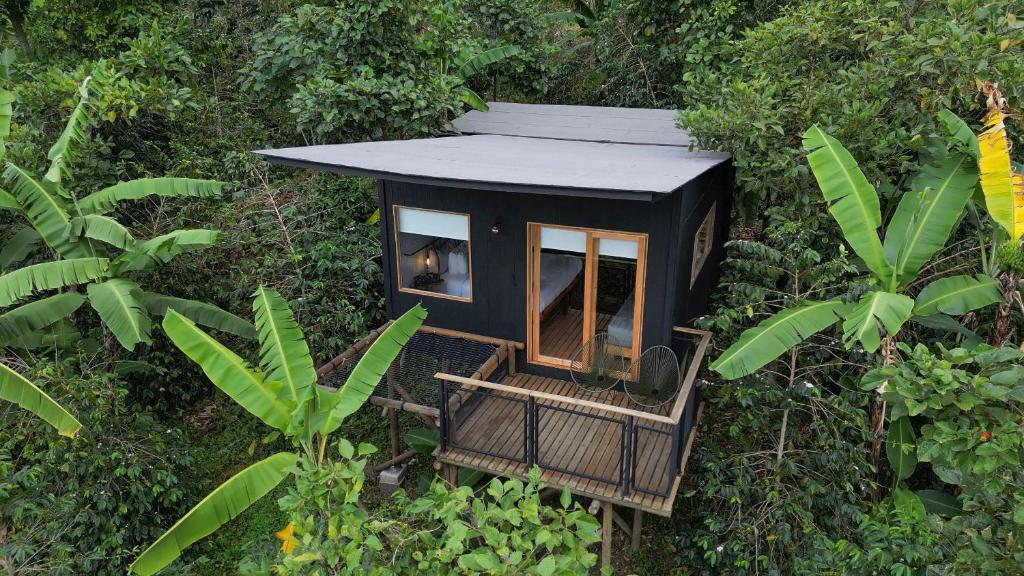
If you’re looking to truly unplug, some farms double as eco-lodges or coffee farm stays where you can sleep in the middle of the plantation. It’s the slowest and arguably most immersive—way to experience the Colombian coffee region.
You wake up surrounded by coffee trees, sip a fresh brew grown just meters from your bed, and spend your day learning, tasting, or just enjoying the quiet.
Popular picks: Hacienda Venecia, La Palma y El Tucán
Top-Rated Coffee Farms to Visit in Salento, Pijao, and Quindío (2025 Edition)

You can’t throw a rock in the Colombian coffee region without hitting a coffee finca—but not all of them deliver the same experience.
We’ve narrowed down some of the best, from well-established names to under-the-radar gems. Each of these coffee farms in Colombia offers a slightly different take on the coffee tour, so you can choose based on your travel style, time, and caffeine obsession level.
Finca El Ocaso in Salento: Classic, Scenic, and Super Accessible


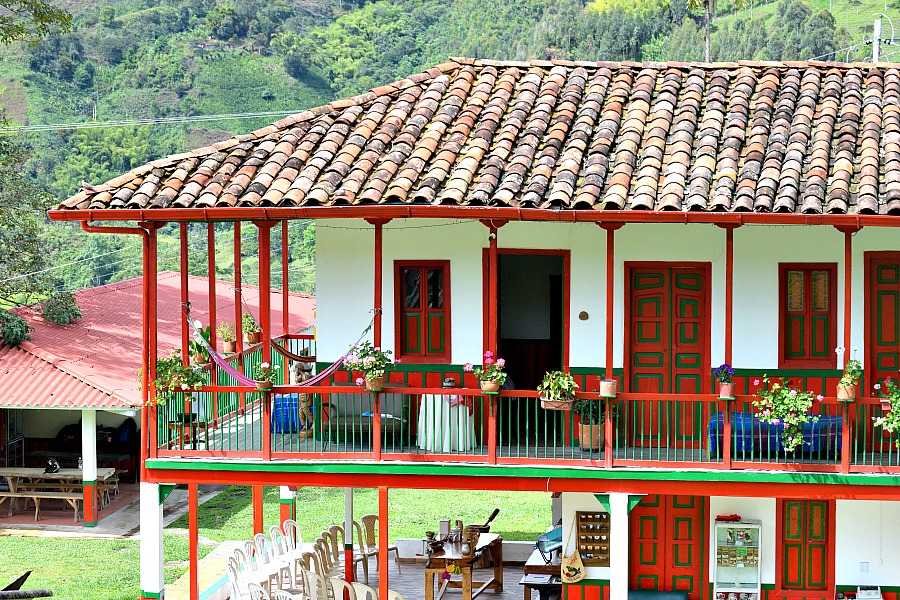
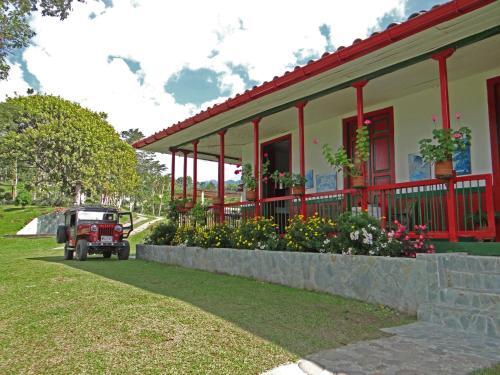
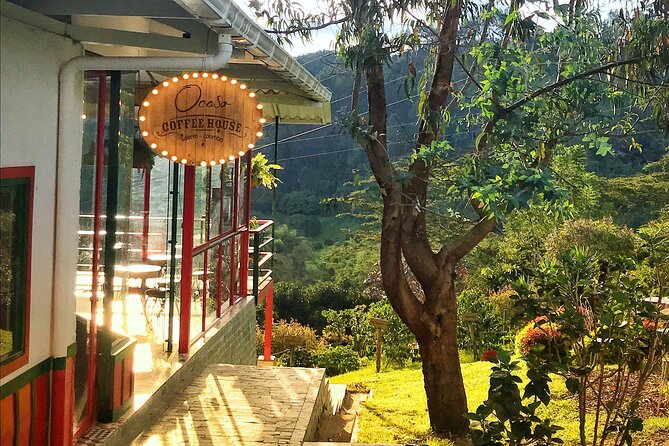
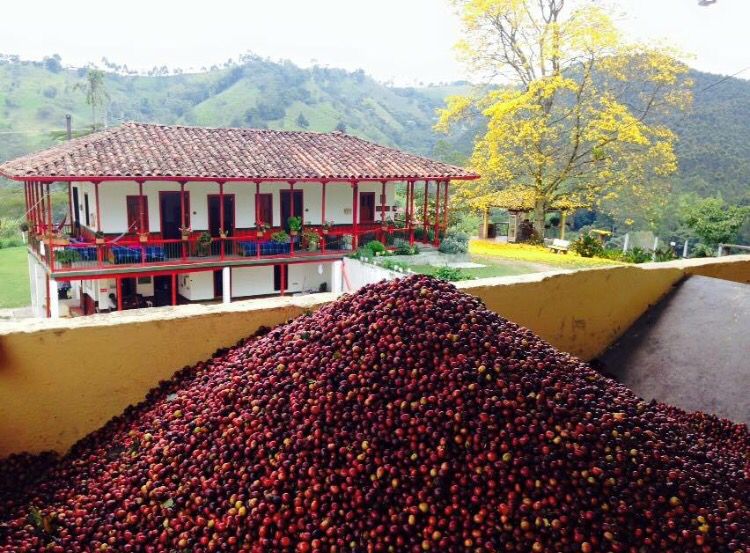
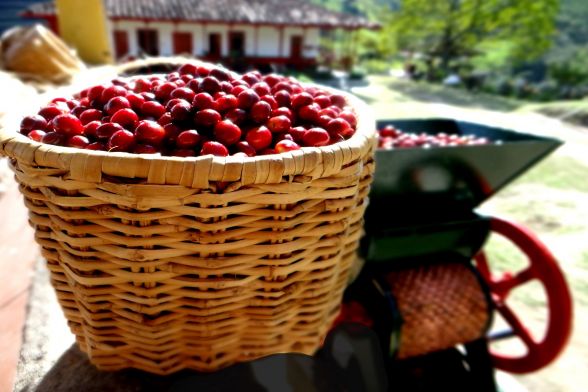
Finca El Ocaso is one of the most well-known coffee farms in Salento, and for good reason. The views are incredible, the tour is polished, and the experience is beginner-friendly without feeling dumbed down
You’ll walk through the coffee cultivation process, pick beans if it’s harvest season, and end with a tasting that highlights how processing and roasting affect flavor.
Good for: First-timers, families, short day trips
Tour length: 1–2.5 hours
Language: Spanish and English
Pro tip: Get there early in the morning when the light’s perfect for photos and the finca’s still quiet.
Don Elias Coffee Tour: Small Farm, Big Heart
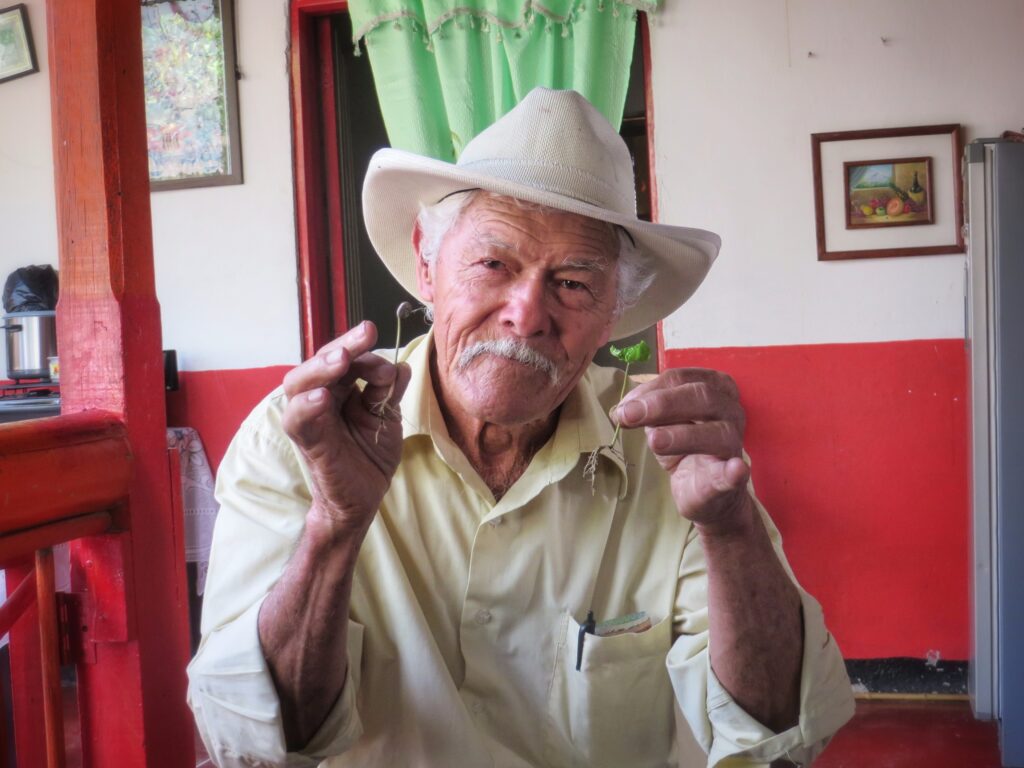
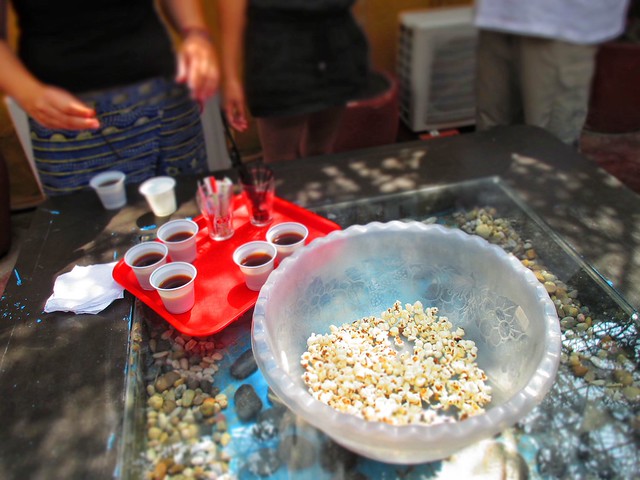
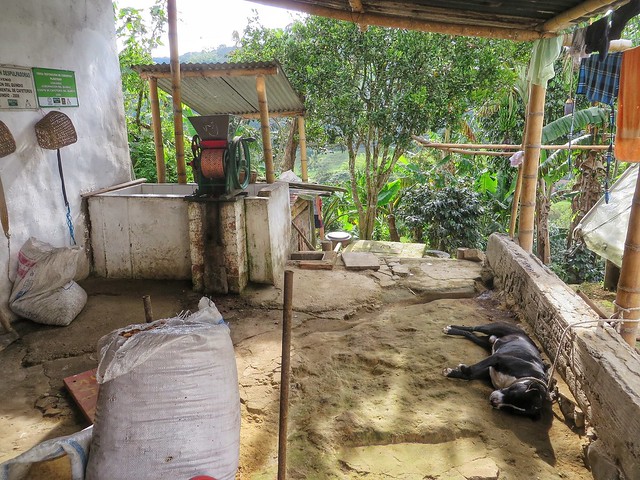
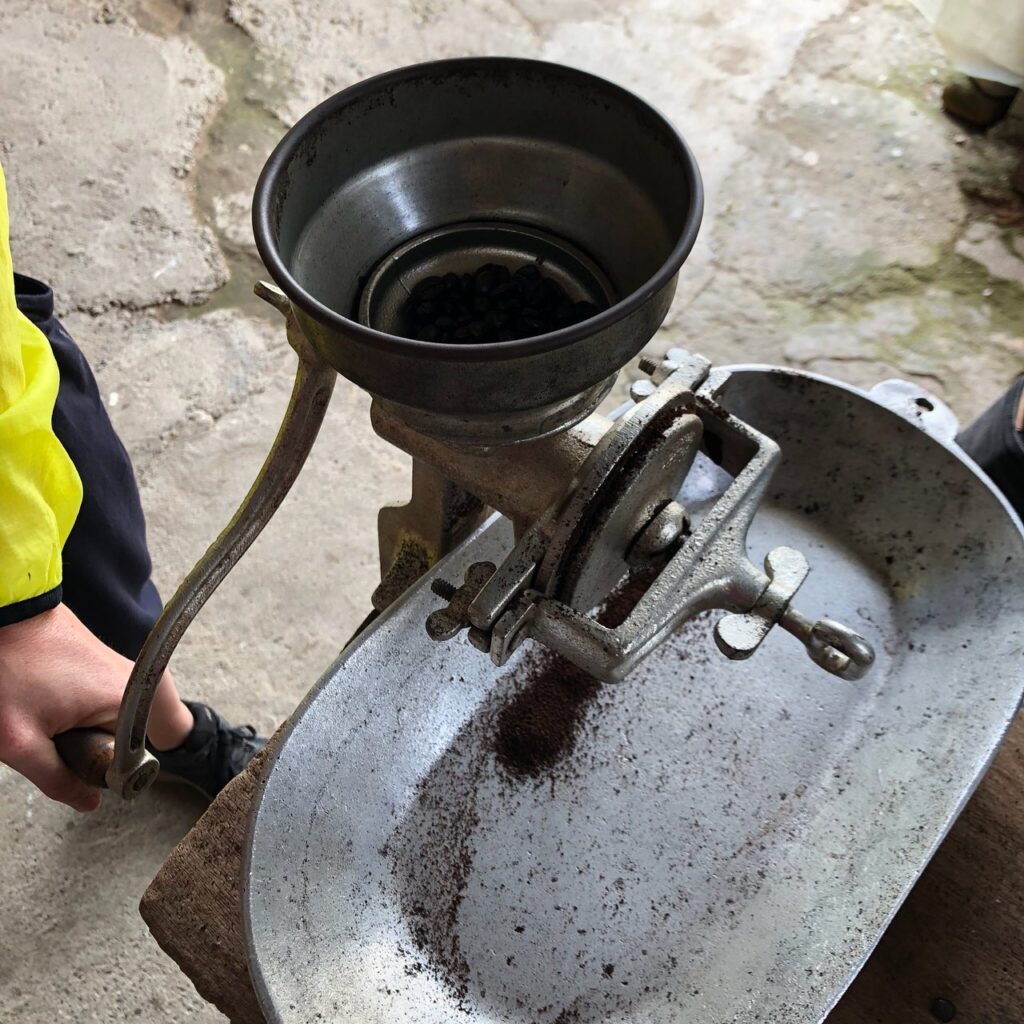
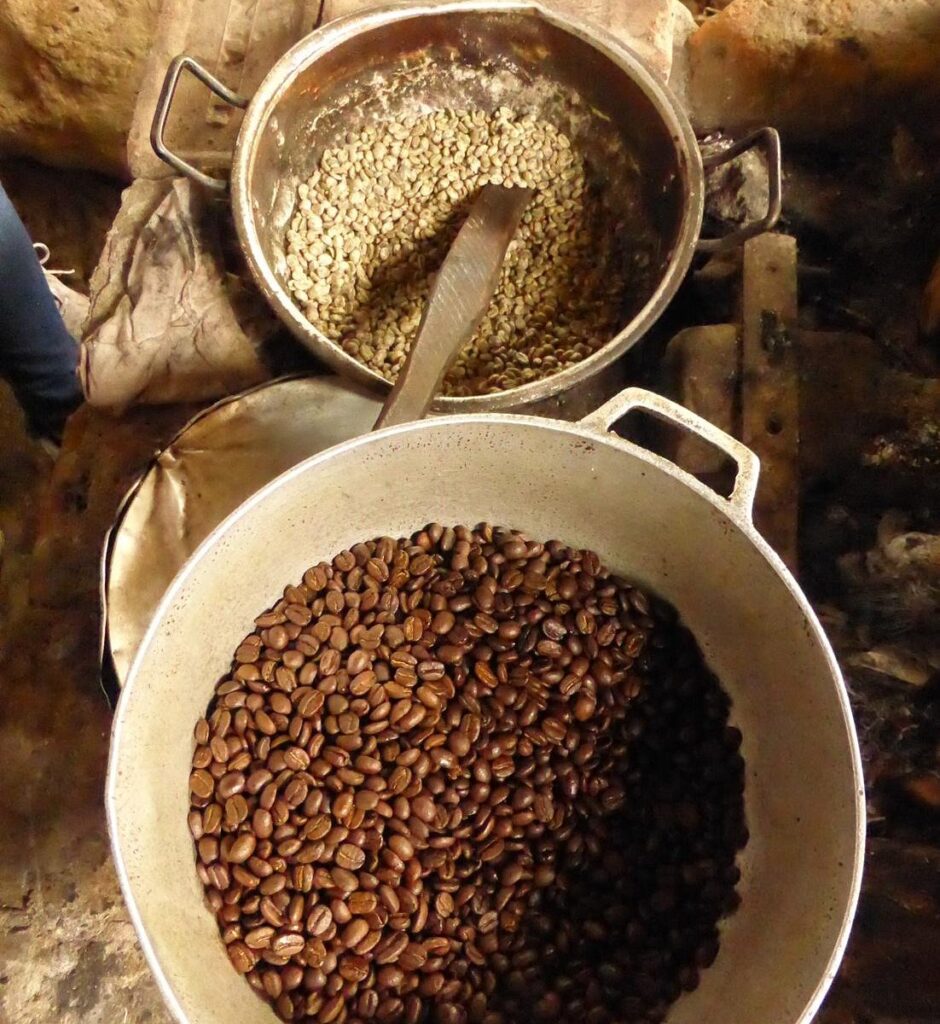
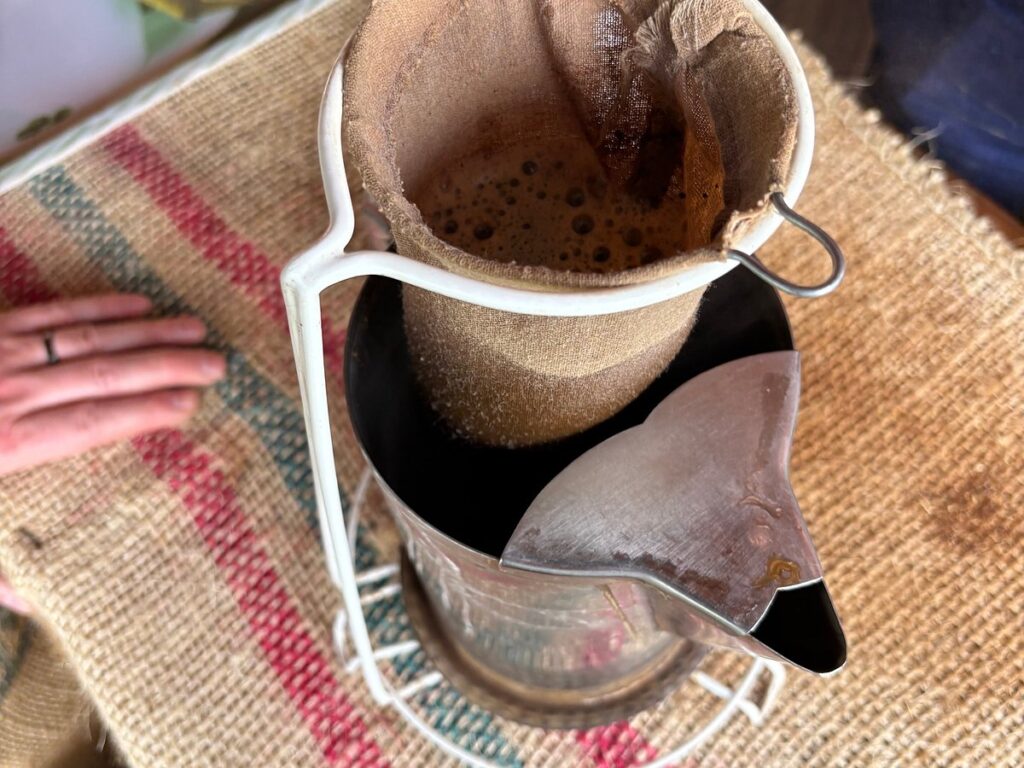
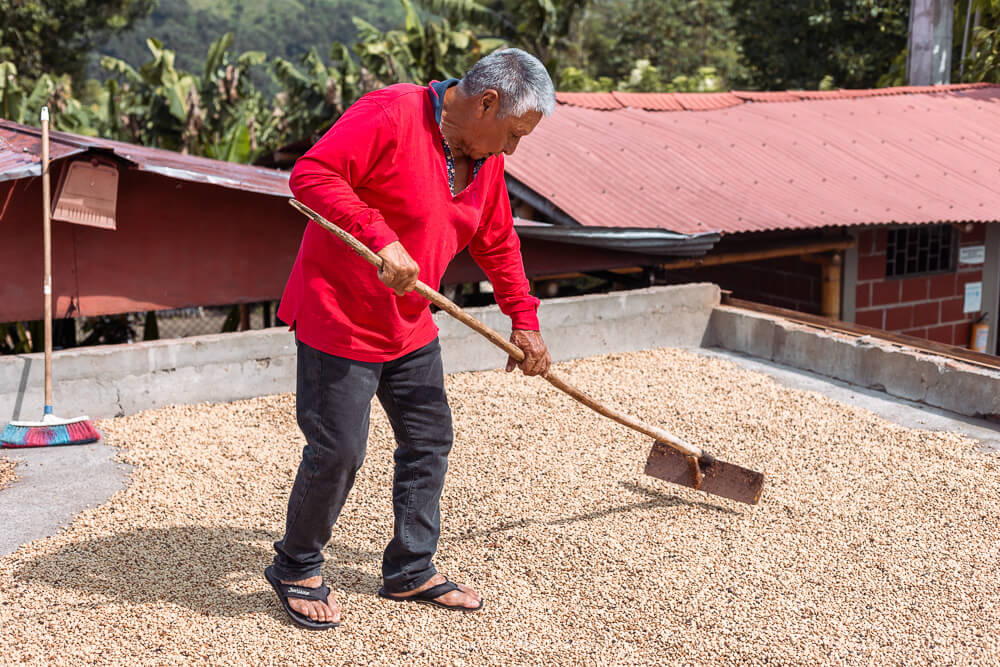
Why it’s worth visiting:
This is a more intimate, family-run coffee farm tour in Salento that feels less polished and more personal. You’ll see how coffee is grown organically, learn about traditional processing methods, and finish with a simple but satisfying cup of Colombian coffee.
Good for: Authentic vibes, travelers who like to support small farms
Tour length: 1–1.5 hours
Language: Spanish mostly, but staff may speak some English
Pro tip: Wear shoes you don’t mind getting muddy—this one’s a little more rustic.
Café San Alberto: Premium Coffee in a Premium Setting
Why it’s worth visiting:
If you want to dive into specialty coffee and sip one of the most awarded Colombian brands, this is the tour for you. Located in Buenavista, Quindío, the farm is known for its detailed selection process, amazing views, and a coffee lab experience that’ll spoil your taste buds.
Good for: Coffee nerds, couples, photographers
Tour length: 2–3 hours
Language: English and Spanish tours available
Pro tip: Try the coffee tasting experience where you compare different brewing methods.
WakeCup Coffee Tour in Pijao: Kid-Friendly and Community-Based
Why it’s worth visiting:
WakeCup is part of a local effort to support sustainable tourism in Colombia. Their tour is super engaging for kids and includes interactive elements that make learning about coffee fun without dumbing it down.
Good for: Families, travelers with kids, socially conscious tourists
Tour length: 6 hours (yes, it’s a full experience)
Language: Spanish and English
Pro tip: Book ahead—they only run tours on certain days and spots fill up fast.
Hacienda Venecia near Manizales: Stay and Sip
Why it’s worth visiting:
This is more than a coffee tour—it’s a full-blown coffee experience. You can stay overnight, explore the farm at your own pace, and take part in guided workshops that cover Colombian coffee production, tasting techniques, and brewing tips.
Good for: Slow travelers, digital nomads, couples
Tour length: Flexible (you set the pace)
Language: English, Spanish, and even some French
Pro tip: Try the barista course if you’re staying more than one night.
Divisa de Don Juan: Interactive and Family-Friendly
Why it’s worth visiting:
This one’s great for visitors who want something hands-on and welcoming. The guides are warm, the setting is peaceful, and it’s especially good if you’re looking for a coffee tour in Salento that works well with kids.
Good for: Families, casual travelers
Tour length: Around 2 hours
Language: Mostly Spanish
Pro tip: Try the traditional snacks served during the tour—it’s a nice cultural bonus.
What to Expect on a Coffee Tour in Colombia
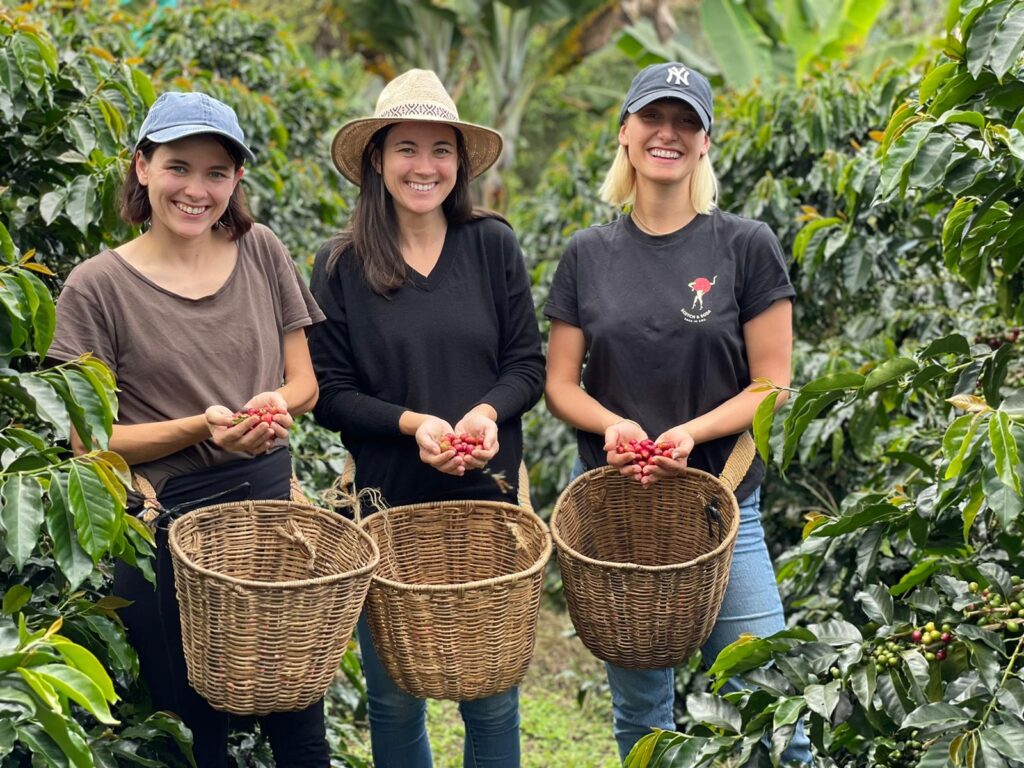
If you’ve never been on a coffee farm tour in Colombia before, you might be wondering—what actually happens? Is it just sipping coffee and nodding politely? Not even close.
These tours are hands-on, super informative, and depending on the finca, can give you a legit behind-the-scenes look at how your daily cup of joe gets made—from plant to pour.
Here’s what a typical Colombian coffee tour includes:
1. Walking the Land
You’ll start by walking through the coffee plantation, usually with a local guide who’ll explain the region’s geography, climate, and how those factors affect the coffee bean. This is where terms like altitude and terroir come into play—yes, they matter for coffee just like they do for wine.
2. Learning the Process (Yes, It’s More Than Just Roasting)
After the walk, you’ll dive into the coffee production process. This usually includes:
- Picking coffee fruits (if it’s harvest season)
- Learning about the washed process vs. natural drying
- Seeing how beans are fermented, dried, and sorted
Some fincas will let you try your hand at picking or pulping coffee cherries, which is a lot harder than it looks.
3. Roasting and Brewing
Many tours include a small roasting demo where you see how green beans become that rich brown roast we all know. Some even let you do it yourself.
From there, it’s time to brew and yes, this part matters. You might get a basic drip brew or a full-on coffee cupping session where you taste different flavor notes and learn how altitude, soil, and processing impact the final result.
4. Tasting the Final Product
Of course, the grand finale is drinking a cup of fresh Colombian coffee, it’s usually made from beans grown just a few steps from where you’re standing.
And honestly, it hits different. It’s not just the freshness; it’s understanding everything that went into it.
Frequently Asked Questions About Visiting a Coffee Farm in Colombia
What’s the best time to visit Colombia’s coffee region?
You can visit the coffee region year-round, but the best time depends on what kind of experience you’re after. The main harvest seasons are April to May and October to November is when you’ll see the farms in full swing with picking, drying, and processing. If you’re looking to avoid crowds, aim for off-peak months like February or September.
Are coffee tours in Salento kid-friendly?
Yes, many coffee tours around Salento are great for families.
Farms like WakeCup and Divisa de Don Juan have interactive tours that keep kids engaged and entertained. These aren’t dry lectures—they’re hands-on, outdoors, and designed to be fun for all ages.
Can I buy coffee beans at the farms?
Definitely. Most farms sell their own beans—freshly roasted, often right on-site.
How long is a typical coffee tour?
Most tours last between 1 and 3 hours, depending on how deep they go.
Short tours might just include a walk and a tasting, while longer experiences—like those at Finca El Ocaso or Café San Alberto—may cover everything from cultivation to cupping to roasting.
Do I need to speak Spanish to enjoy a coffee farm tour?
Not necessarily. Many of the more popular farms around Salento and Quindío offer English-speaking guides.
Where to Stay in Colombia’s Coffee Region (And How to Get There)
Getting to the Eje Cafetero is easier than you might think, and there are plenty of solid options when it comes to staying close to the action—whether you’re looking for boutique vibes, rustic fincas, or just a comfy bed with a view of the coffee trees.
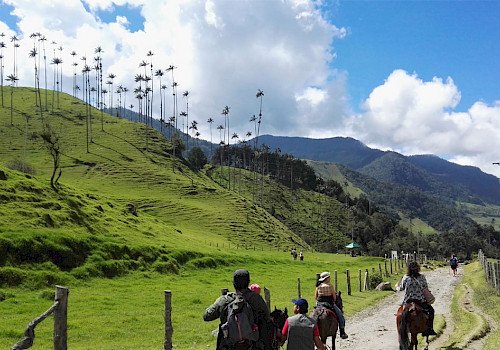
Getting There: The Best Ways to Reach the Coffee Triangle
Most travelers start their trip by flying into Bogotá, Medellín, or Cali, and from there you’ve got a few easy options:
- Fly into Pereira or Armenia: These are the two main airports closest to the heart of the Colombian coffee region. Flights are short and pretty affordable.
- Bus it from Medellín or Bogotá: If you’re up for a scenic ride, buses to Salento, Manizales, or Armenia run daily. They take longer (think 6–8 hours), but the views are next-level.
Once you’re in the region, getting between towns and coffee farms is usually done via colectivo jeeps, taxis, or private tours.
Where to Stay: Coffee Region Lodging by Travel Style
For the full finca experience:
- Hacienda Venecia (Manizales) – A working coffee farm that also offers lodging, farm-to-cup workshops, and plenty of hammock time.
- La Palma y El Tucán (near Bogotá) – A high-end option with sleek cabins surrounded by coffee plants. Ideal for anyone looking for luxury with a caffeine twist.
For town vibes with coffee close by:
- Salento – This is the go-to for most travelers. It’s charming, walkable, and loaded with restaurants, bars, and boutique stays. Bonus: tons of coffee tours nearby.
- Filandia – A quieter alternative to Salento with similar views and more of a local vibe. Great base for coffee farm tours without the tourist crowds.
For remote, scenic stays:
- Pijao – Smaller and more off-the-beaten-path. Perfect if you’re looking to unwind and connect with nature (and maybe unplug a bit).
- Buenavista – Home to Café San Alberto, this spot offers unreal mountain views and fewer crowds than Salento or Armenia.
Travel Tips for Coffee Lovers in Colombia
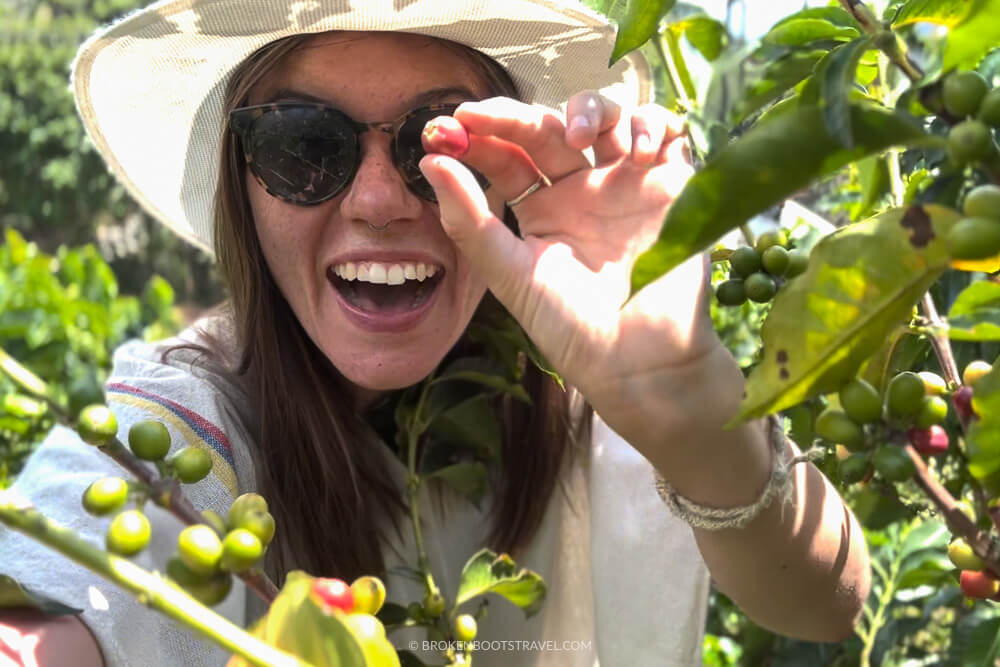
You’ve got your list of farms, your stay booked, and your flights sorted—but before you start knocking back cups of Colombian coffee straight from the source, here are a few things you’ll want to keep in mind.
Know the Coffee Seasons
Colombia has two main coffee harvests:
- April to May
- October to November
Visiting during these times means you’re more likely to see the harvesting process in action—especially if you’re into seeing the full coffee production process, not just the sipping.
That said, most coffee tours run year-round, and some farms have micro-harvests depending on elevation and microclimate.
Pack for the Mountains, Not the Beach
The coffee region sits at higher altitudes, so even though it’s Colombia, it can get chilly—especially in the mornings or if you’re staying in rural coffee fincas.
Bring layers, comfortable shoes (you’ll be walking through farms), and don’t forget sunscreen and bug spray. Coffee tours aren’t glamorous, but they’re real.
Spanish Helps, But It’s Not Mandatory
A lot of bigger farms offer coffee tours in English, especially around Salento and Armenia, but don’t expect every guide to be fluent. Smaller, family-run fincas may only speak Spanish.
Brush up on the basics, or download Google Translate if you want to ask more about coffee cultivation, flavor notes, or anything beyond “Where’s the bathroom?”
Don’t Just Sip—Taste
If you get the chance to do a coffee cupping session, take it. This is where you can really learn what makes Colombian coffee unique. You’ll sample different roasts, taste regional differences, and maybe learn why you like a washed process bean more than a natural one.
It’s one of the most underrated parts of the experience—and yes, your daily coffee routine will never be the same after.
Buy Local, Buy Fresh
Many coffee farms sell their own beans. Skip the airport souvenir shops and grab a bag (or five) straight from the source. You’ll get high-quality Colombian coffee that hasn’t been sitting on a shelf for months, and you’ll be directly supporting the local coffee farmers.
Look for roast dates on the packaging. The fresher, the better.
Why Visiting a Coffee Farm in Colombia Is Worth It
Visiting a coffee farm in Colombia isn’t just another thing to check off your itinerary—it’s one of the best ways to experience the coffee cultural landscape of colombia, and yes, its legendary beans.
The Eje Cafetero is more than a postcard-perfect region. It’s where Colombian coffee culture lives and breathes—where small farmers, steep hillsides, and generations of craft come together to produce some of the best coffee in the world.
Whether you’re in it for the flavors, the farming traditions, or just looking for something real and memorable to do while exploring Salento or the surrounding towns, a coffee farm tour delivers. And with so many options—family-run fincas, premium specialty coffee experiences, full-day farm stays—you can build the kind of visit that actually fits your travel style.
So if you’re planning a trip to Colombia and wondering if it’s worth adding a detour into the coffee region?
Yes. Absolutely yes.
Just make sure to show up caffeinated—or not. Either way, by the end of the day, you’ll know exactly what goes into making that perfect cup of Colombian coffee.

